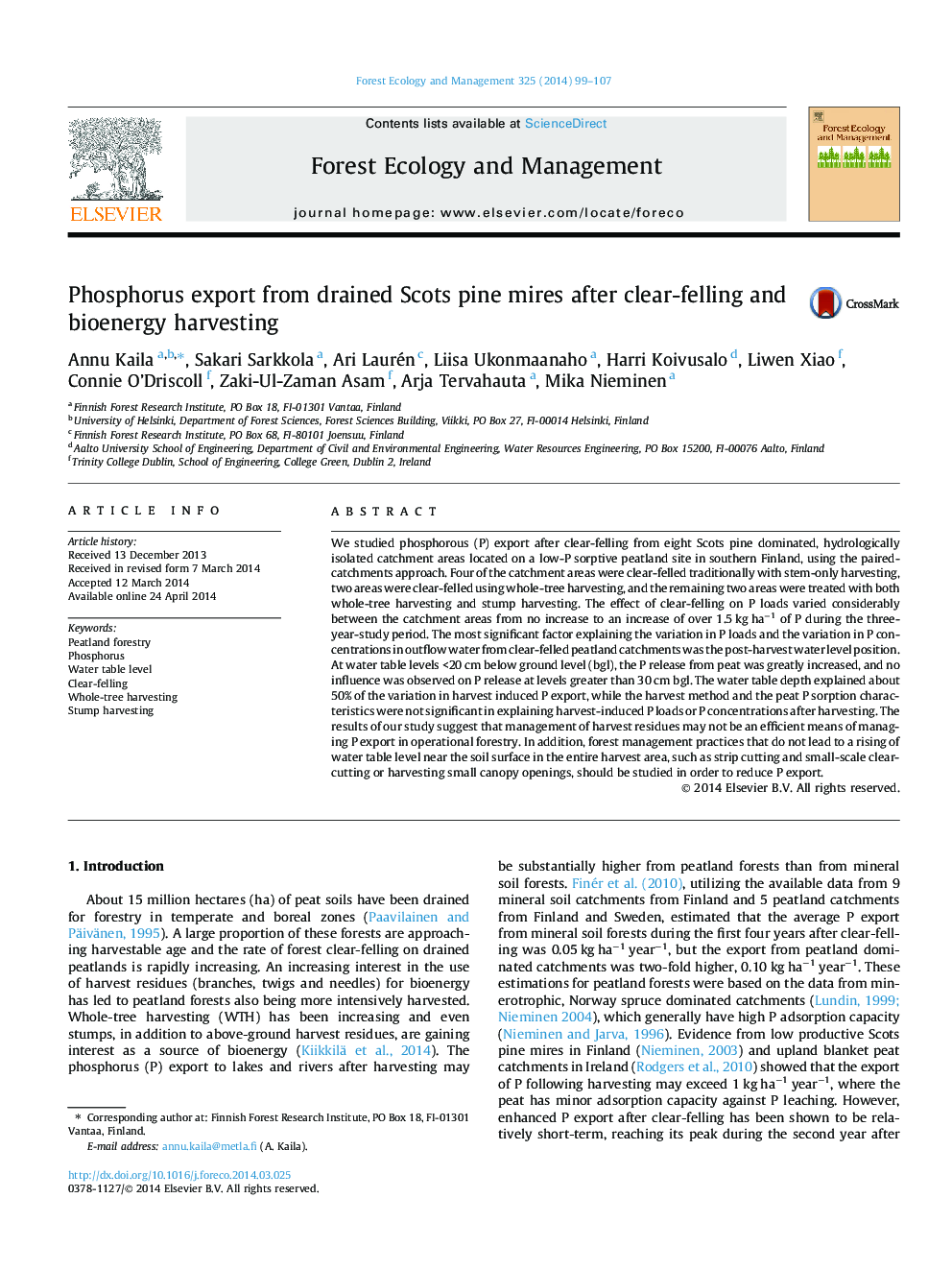| کد مقاله | کد نشریه | سال انتشار | مقاله انگلیسی | نسخه تمام متن |
|---|---|---|---|---|
| 86546 | 159195 | 2014 | 9 صفحه PDF | دانلود رایگان |
• We studied P export after clear-felling from Scots pine dominated peatlands in Finland.
• The water table level was the most significant factor contributing to the P export.
• The harvest method was not significant in explaining harvest-induced P loads.
• The peat P sorption characteristics were not significant in explaining the P loads.
We studied phosphorous (P) export after clear-felling from eight Scots pine dominated, hydrologically isolated catchment areas located on a low-P sorptive peatland site in southern Finland, using the paired-catchments approach. Four of the catchment areas were clear-felled traditionally with stem-only harvesting, two areas were clear-felled using whole-tree harvesting, and the remaining two areas were treated with both whole-tree harvesting and stump harvesting. The effect of clear-felling on P loads varied considerably between the catchment areas from no increase to an increase of over 1.5 kg ha−1 of P during the three-year-study period. The most significant factor explaining the variation in P loads and the variation in P concentrations in outflow water from clear-felled peatland catchments was the post-harvest water level position. At water table levels <20 cm below ground level (bgl), the P release from peat was greatly increased, and no influence was observed on P release at levels greater than 30 cm bgl. The water table depth explained about 50% of the variation in harvest induced P export, while the harvest method and the peat P sorption characteristics were not significant in explaining harvest-induced P loads or P concentrations after harvesting. The results of our study suggest that management of harvest residues may not be an efficient means of managing P export in operational forestry. In addition, forest management practices that do not lead to a rising of water table level near the soil surface in the entire harvest area, such as strip cutting and small-scale clear-cutting or harvesting small canopy openings, should be studied in order to reduce P export.
Journal: Forest Ecology and Management - Volume 325, 1 August 2014, Pages 99–107
